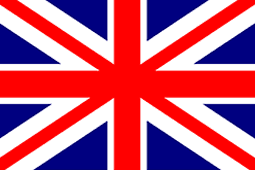Is Stream Water Safe to Drink? Risks, Tips & How to Purify
Is Stream Water Safe to Drink? Risks, Tips & How to Purify
You’ve drained your bottle on a long ridge walk, and a clear, fast‑moving stream is singing beside the path. It looks pristine — but is it safe to drink? In the UK, even the cleanest-looking water can carry pathogens (Giardia, Cryptosporidium, E. coli), animal waste, or runoff from paths and farms. After rain or during spate, streams can also hide algae and fine sediments that harbour microbes. Staying hydrated matters, but so does avoiding a trip-ending stomach bug.
The fix is simple: choose smarter sources and treat the water properly. Collect from the best spot you can, pre‑filter grit, then purify — boil for a minute at UK elevations, or use a backpacking filter and disinfectant (chemical or UV). A pocket-size kit adds minutes to your routine and removes most of the risk.
This guide shows you why most stream water isn’t safe, how to recognise illness, assess what’s upstream, pick the safest collection point, and purify step by step. You’ll get UK‑specific tips, emergency workarounds, and a lightweight kit list to keep you sipping safely on the hill.
Step 1. Understand why most stream water isn’t safe
The honest answer to “is stream water safe to drink?” is usually no. Even crystal‑clear, fast‑moving water can carry microscopic threats. Pathogens from animal and human waste (or a dead carcass upstream) wash into streams, especially after rain. Movement and cold temperatures don’t sterilise water, and what you can’t see — viruses, bacteria and protozoa — is what most often makes walkers ill.
- Pathogens persist: Giardia, Cryptosporidium, E. coli and others are well documented in backcountry water and don’t vanish in fast flow.
- Unknown upstream: Farms, paths, campsites or wildlife watering holes may be just around the bend.
- Rain and spate raise risk: Runoff adds faecal contamination and fine sediment that can harbour and shield microbes.
- Not just bugs: Chemical pollutants and blue‑green algal toxins can occur; clarity alone isn’t a safety indicator.
Step 2. Recognise waterborne illnesses, symptoms and when to seek help
Most stream-related sickness hits the gut first: diarrhoea, cramps, nausea, sometimes fever. Knowing the likely culprits and red flags helps you act quickly and avoid a minor bug becoming a trip-ender. If you feel unwell after drinking untreated water, stop, rest, and consider the patterns below.
- E. coli: Rapid onset diarrhoea without blood. Typical first aid is to rest, take clear fluids or rehydration solutions.
- Shigella/Salmonella: Symptoms often start about 24 hours after exposure with fever, vomiting, and bloody diarrhoea. Visit your GP; avoid anti‑diarrhoeals (e.g., Imodium/Kaolin) as they may mask symptoms.
- Leptospirosis (Weil’s/Hardjo): Fever and flu‑like illness after contact with water contaminated by rats or cattle. Time is crucial — go straight to your GP; early penicillin can lead to full recovery.
- Giardia/Amoebic dysentery: Onset around 24 hours; vomiting, diarrhoea with mucous and blood, “eggy” sulphurous burps and foul gas. See your GP; a stool test helps guide treatment.
If symptoms are severe or you suspect leptospirosis, seek medical help immediately and explain your water exposure.
Step 3. Assess the risks at your location and what’s upstream
Before you dip a bottle, pause and risk‑assess the stream and its catchment. Most contamination comes from what’s above you — farms, paths, campsites and animal or bird activity — and rain pushes more into the flow. Use these quick checks to judge whether stream water is safe to drink after treatment, or whether to keep moving to a cleaner source.
- Go higher/near source: Favour water near its spring and above habitation and trails.
- Scan for human use: Avoid spots near campsites, popular paths, washing areas or swim holes.
- Check livestock/wildlife signs: Dung, hoof prints, carcasses, or watering points upstream are red flags.
- Note tributaries/drainage: Bypass confluences, especially from fields or heavily trodden ground.
- Read recent weather: After heavy rain/spate, expect higher faecal load and sediment; go higher or wait.
- Water cues: Avoid stagnant pools, scum/foam, strong odours or oily surfaces.
- Flow and temperature: Prefer cool, clear moving water — but always treat it.
Step 4. Choose the safest spot to collect water
Spot choice does most of the safety work before you even start treating. In the UK, make stream water as safe to drink as possible by favouring high, clean sources and steering clear of people and livestock. That way your boil, filter or disinfect step has less to do and the water tastes better.
- Go higher/near source: Springs and headwaters above habitation and busy paths are best.
- Choose flow: Take from moving water; avoid stagnant pools.
- Pick clear water: Skip muddy, silty spots and trampled banks or obvious runoff.
- Stay upstream of use: Don’t draw below washing areas, campsites, grazing or watering points.
- Avoid suspicious signs: Scum, discolouration, oily films, strong odours or algal blooms.
- For lakes/lochans: If needed, take from the top few inches, not the bottom.
Step 5. Collect and pre-filter the water properly
Good collection technique makes downstream treatment far more effective. Dirty hands, gritty water and disturbed sediment can introduce contamination and blunt filters or reduce the effectiveness of chemicals and UV. Take a few calm seconds to do it right and you’ll get clearer, safer water with less faff later.
- Clean up first: Wash or sanitise hands and use a clean, disinfected container.
- Go for moving water: Step into a stable spot that won’t crumble and cloud the flow.
- Dip just below the surface: Point the bottle mouth upstream and submerge a few centimetres — don’t scrape the bottom.
- For lakes/lochans: Skim from the top few inches, not the depths.
- Pre‑filter sediment: Run water through your filter’s pre‑screen or a gravity bag. If you have no kit, pour through a clean cloth or paper coffee filter.
- Make it clear: If the water is cloudy, pre‑filter again — murk reduces chemical and UV performance.
- Keep it clean: Cap immediately and avoid touching the bottle mouth or cap interior.
Step 6. Purify by boiling (how long at UK elevations)
Boiling is the most reliable field method to make stream water safe to drink. It kills disease‑causing organisms — bacteria, viruses and parasites such as Giardia and Cryptosporidium — but it won’t remove sediment or chemical pollution, so pre‑filter first. In the UK, altitude is low enough that a short, rolling boil is sufficient for safe drinking water.
- Pre‑filter until the water runs clear.
- Heat in a clean pot and bring to a vigorous, rolling boil.
- Hold at a rolling boil for 1 minute at UK elevations (below 6,500 ft/≈2,000 m).
- If you’re ever above 6,500 ft, boil for 3 minutes.
- Let it cool naturally; don’t add untreated water or ice.
- Decant into a clean, disinfected container and cap immediately to avoid re‑contamination.
Boiling is fast, simple and highly effective when done for the correct time at elevation.
Step 7. Purify with a filter (what it removes and pore sizes)
A backpacking filter is the fastest way to make clear stream water safer to drink on the hill. It strains out protozoa (Giardia, Cryptosporidium) and many bacteria, and clears silt so later treatment works better. But viruses are too small for standard filters, so add boiling, chemicals or UV to finish the job.
- Absolute pore size ≤1 micron (NSF 53/58 “cyst reduction/removal”): High effectiveness against Cryptosporidium and Giardia.
- Bacteria: Many are captured by fine filters; check your model’s rating and instructions.
- Viruses: Too small for typical filters — use a second step (boil, chemical or UV).
- Sediment/debris: Filters remove silt, dirt and sand, improving taste and performance of disinfection.
Pre‑filter murky water, avoid touching the clean outlet, and maintain your filter as directed — neglected filters work poorly. Remember: filtration alone doesn’t fully purify drinking water; follow with boiling or disinfection.
Step 8. Disinfect with chemicals or UV (contact time and limitations)
After you’ve cleared the grit with a filter, disinfection is your “final kill” step to make stream water safe to drink. Chemical disinfectants and UV purifiers can inactivate bacteria, viruses and other organisms, but only if you use them correctly. Clarity matters: murky water shields microbes, cold water slows chemical action, and UV needs clear water and enough exposure time.
- Chemical tablets/drops: Typically iodine or chlorine dioxide. Pre‑filter first, then follow the product’s instructions precisely; contact times often range from 30 minutes up to 4 hours. Swirl to mix and wet the cap threads. Avoid pool‑cleaning tablets. If pregnant, iodine‑sensitive, or with thyroid issues, consult your GP before use.
- UV purifiers: Only for small volumes of clear water. Pre‑filter, stir during treatment, and ensure batteries are well charged. Inadequate exposure or low power means inadequate disinfection. As an extra safeguard, you can add a small amount of chemical disinfectant afterwards to help maintain water quality in the container (per product guidance).
- Limitations: Cloudy or coloured water reduces both chemical and UV effectiveness; extend contact time only as directed by the manufacturer rather than guessing. Always use a clean bottle to avoid re‑contamination.
Step 9. Use two methods for extra safety (e.g., filter + boil/chemical/UV)
Two steps are better than one. Pair physical removal with a final kill step. This “multi‑barrier” approach adds margin when water is cloudy, cold or questionable — and it’s the simplest way to stack the odds in your favour.
- Filter → boil: Most robust. Remove silt/cysts, then 1‑minute rolling boil (UK) for viruses; decant into a disinfected bottle.
- Filter → chemical: Fuel‑free. Use chlorine dioxide/iodine; follow instructions (often 30 min–4 h); wet cap threads.
- Filter → UV: Quick for clear water. Pre‑filter, stir during exposure, check batteries; optionally add a small chemical dose to maintain bottle quality.
Step 10. Emergency options when you have no kit (last-resort tactics)
If you’re running dry and have no filter, chemicals or UV, your goal is to lower the risk as much as possible. Nothing here makes water safe — it only improves your odds. When dehydration is the bigger danger, choose the cleanest source you can and use simple handling to reduce contamination before drinking.
- Go higher/near source: Aim for springs/headwaters above habitation, paths and grazing.
- Choose cold, clear flow: Prefer moving water; avoid stagnant pools, scum, strong odours and oily films.
- Avoid animal/human activity: Steer clear of hoof prints, dung, campsites and washing/swim spots.
- Let it settle: Rest turbid water so silt drops, then pour off the top.
- Cloth pre‑filter: Pour through a clean T‑shirt/cloth to remove grit and debris.
- Clean hands/container: Sanitise hands; don’t touch the bottle mouth; cap immediately.
- Monitor after: If you become unwell, rest, rehydrate and seek medical advice promptly.
Step 11. UK-specific advice: peat staining, algal blooms, livestock and floods
UK hills bring their own quirks: tea‑coloured peat burns, summer algal blooms, sheep and cattle on open access land, and sudden spate after rain. None of these automatically rules out using a source, but they change where you collect and how you treat to make stream water safe to drink.
- Peat staining: Brown water is common over moorland. An oily sheen on slow, boggy streams can be natural peat leachate — best avoided if possible. If you must use it, pre‑filter well and purify.
- Algal blooms: Avoid stagnant or discoloured water, surface scums, strong odours or oily films; don’t wash or drink from it.
- Livestock pressure: Steer clear of muddied banks, dung, hoof prints and obvious watering points. Collect above paths, campsites and grazing.
- Floods/spate: Heavy rain increases runoff, sediment and faecal contamination. Go higher toward the source, let silt settle, and always treat.
- Lakes/lochans: If you have no stream, skim from the top few inches, well away from scums and inlets.
- Scottish high ground: Flowing water above habitation is often safer — still apply common‑sense checks and treat for certainty.
Step 12. Plan ahead and pack a lightweight water treatment kit
A small, planned kit gives you two barriers (removal + disinfection) and keeps clean gear separate from dirty. Treat ahead of thirst. Pack the essentials below to turn most UK streams into safe drinking water fast.
- Filter: Compact unit with absolute pore size ≤1 micron (NSF cyst reduction) plus backflush/cleaning kit.
- Containers: One “dirty” collection bag and a separate clean bottle; label and keep apart.
- Heat: Small metal mug/pot to boil for 1 minute (UK elevations).
- Disinfection: Chlorine dioxide/iodine tablets (typical contact 30 min–4 h) or a UV pen for clear water.
- Hygiene/handling: Pre‑filter cloth/coffee filter, hand sanitiser, spare cap; avoid touching outlets and threads.
Key takeaways
Crystal‑clear streams can still carry pathogens and pollutants. Your best defence is smart source choice and a simple two‑step treatment. With tidy collection, a quick pre‑filter, then boiling or filter plus disinfection, you can stay hydrated on UK hills without risking a trip‑ending bug.
- Assume untreated water isn’t safe: Clarity and flow don’t equal purity.
- Think upstream: Favour sources near the spring and above habitation/livestock.
- Collect well: Moving, clear water; avoid stagnant pools, scum and strong odours.
- Pre‑filter first: Reduce silt; keep “dirty” and “clean” gear strictly separate.
- Boil correctly: 1 minute at UK elevations; 3 minutes above 6,500 ft.
- Layer protection: Filter (≤1 µm) for cysts, then chemical or UV for viruses.
Pack a lightweight setup before you go; filters, tablets and a clean bottle are small insurance. When you’re ready to kit up, explore compact treatment options at Take a Hike UK.















